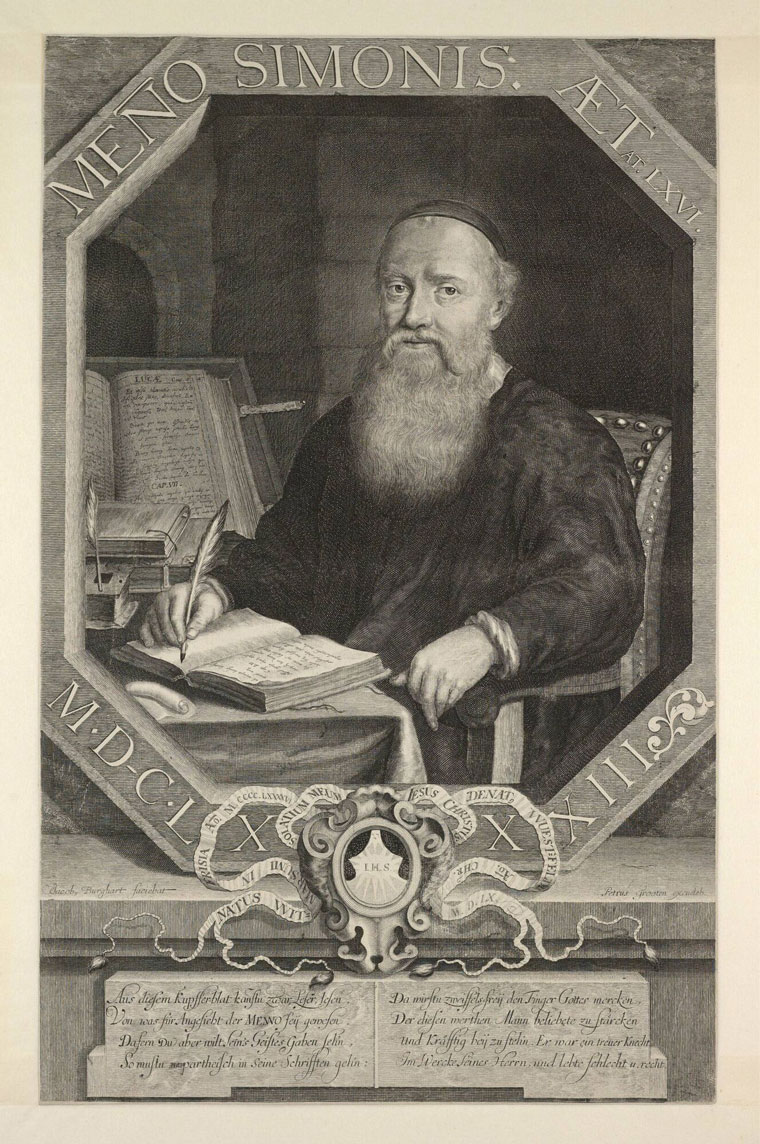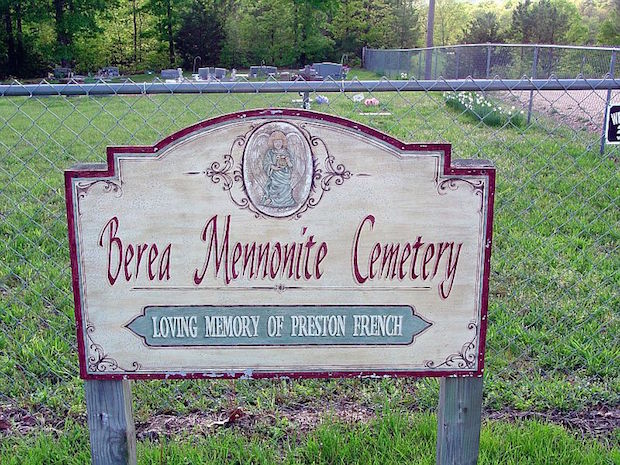The Mennonite and Amish Traditions
The Mennonites are named after Menno Simons (1496-1561). He began his career as a priest in his home town of Pingjum in Holland. He read the writings of Martin Luther, but eventually came to the conclusion the infant baptism, which Luther endorsed, was not a practice in conformity with Scripture. In 1537 he left the Catholic church, married, and became an itinerant Anabaptist preacher and writer. The Anabaptists were Christians who rejected infant baptism, worshiped in each others' homes, generally were pacifists, and were often persecuted.
The Amish owe their name to Jakob Ammann (1644-after 1712), a travelling Anabaptist preacher who was born in the Canton of Bern in Switzerland. Ammann's stricter insistence on a number of Anabaptist practices, including the custom of shunning (social avoidance) of believers who had been banned, led to a split in 1693 between his followers and the followers of a certain Hans Reist.
Mennonites and Amish arrive in the Ozarks
Some older works on religion in the Ozarks do not even mention the Mennonites or the Amish. Despite these omissions, Anabaptist groups have been present in the Ozarks for well over a century. Founded in 1895 by newcomers from Illinois and Nebraska, the Birch Tree Mennonite Church in rural Shannon County had thirty members in 1952. While Church of the Brethren congregations formed in Hermitage and Springfield (the latter is now defunct), the Amish came to Seymour, Missouri in 1968.

Menno Simons (1496-1561)
There exist no portraits of Menno Simons made during his lifetime. This imaginative portrayal depicts him as a sixty-year old scholar penning a work; in the background a copy of the Gospels is opened to Luke, Chapter 6.
By Jacob Burghart, 1683 (Museum Boijmans Van Beuningen, Rotterdam) [Public domain], via Wikimedia Commons. Credit: https://commons.wikimedia.org/wiki/File:Menno_Simons_by_Jacob_Burghart.jpg

The cemetery of Berea Mennonite Church in rural Shannon County
Some of the graves date from the 1920s and 1930s.
Photo from www.findagrave.com (web address: http://www.findagrave.com/cgi-bin/fg.cgi?page=cr&CRid=1974143)
An Amish Paradox: Diversity and Change in the World’s Largest Amish Community
Charles E. Hurst and David L. McConnell
(Baltimore: John Hopkins University Press, 2010)
The Amish had their beginnings in Switzerland, when they and their leader, Jakob Ammann, separated from another Anabaptist community. The first group of Amish came to Pennsylvania during the 1700’s. One of the features that makes the Amish literally distinct from people around them is their idea of “separation from the world.” Two of the most obvious marks of this separation can be seen in the clothing of the Amish, and in their use of horse and buggy for transportation.
Property of Meyer Library
Mennonite Disaster Service: Building a Therapeutic Community after the Gulf Coast Storms
Brenda Phillips (Lanham: Lexington Books, 2014)
The Mennonites in the United States are a small denomination well-known for their efforts in peace and reconciliation efforts around the world.
Property of Meyer Library.